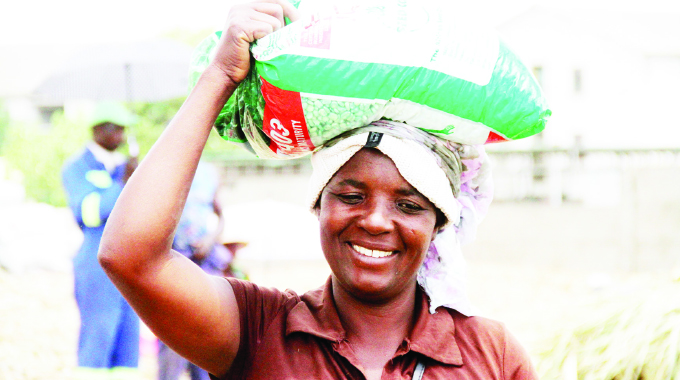
Elita Chikwati
Agriculture Reporter
Farmers in different parts of the country have started planting, as the country is expected to receive some light showers between Tuesday and Wednesday next week.
The country has been receiving isolated rains, while some areas have received significant rains allowing farmers to start planting and in other areas farmers are dry planting.
Lands, Agriculture, Water and Rural Resettlement acting chief director Agritex, Mr Stancilae Tapererewa yesterday confirmed that farmers had started planting.
He said farmers using the conservation agriculture concept (Pfumvudza) had also started planting.
“Where farmers have received 25 millimetres of rain, they can start plating maize,” he said.
“We have distributed rain gauges that were donated by Seed Co, Quton, Windmill and the Tobacco Industry and Marketing Board to extension officers across the country to broaden the area of coverage to assist in planning so that they can give farmers sound advice.
“Once farmers have received enough rains of 25mm and above they can start planting, but if they are not sure they can get advice from their extension officers.”
Mr Tapererewa cautioned farmers who were dry planting to be careful so that they planted using the correct depth.
“If the depth is shallow and the area receives showers, the seed may rot and this will result in poor germination,” he said.
Agriseeds sales and marketing director Ivan Craig yesterday said it was now time for planting, although farmers needed to assess the moisture levels to ensure good germination.
“Now we are in the planting season,” he said. “Any farmer who has adequate rains of 22mm and above can plant maize and 30mm can plant soyabeans.
“Farmers should rely on rain gauges and if they do not have they can use an alternative of digging a hole of between 15 and 20cm and take the soil, form a ball. If it breaks then it shows the area does not have adequate moisture, but if the ball does not break, they can go ahead and plant.”
Mr Craig urged farmers that were dry planting to be careful and ensure that the soil did not form a cap, which will affect germination.
“Farmers should only plant if the soil is totally dry or there is adequate moisture for germination,” he said.
Meteorological Services Department senior forecaster Mr James Ngoma said the country had been receiving some rains as a result of cloud bands drifting in from Botswana, passing over Zimbabwe and these were isolated.
“We have had cycles of the rains coming from Botswana,” he said.
“Our main rains normally come from the ITCZ from December. We will continue to have cycles of the rains from Botswana and we are expecting the next cycle around Tuesday next week.
“The rains are expected to be a little weaker than the previous rains.”
The MSD predicted normal-to-above-normal rainfall for the 2020/21 rainfall season.
This is expected to translate into a bumper agricultural harvest if the distribution of the rains is good and the farmers are well-prepared.
October rains are generally erratic for rain-fed agriculture, but more effective rains are expected during this month going into December in most places.
Flash flooding, violent storms, tropical cyclones, floods in low-lying areas and storms at the onset of the season cannot be ruled out.
